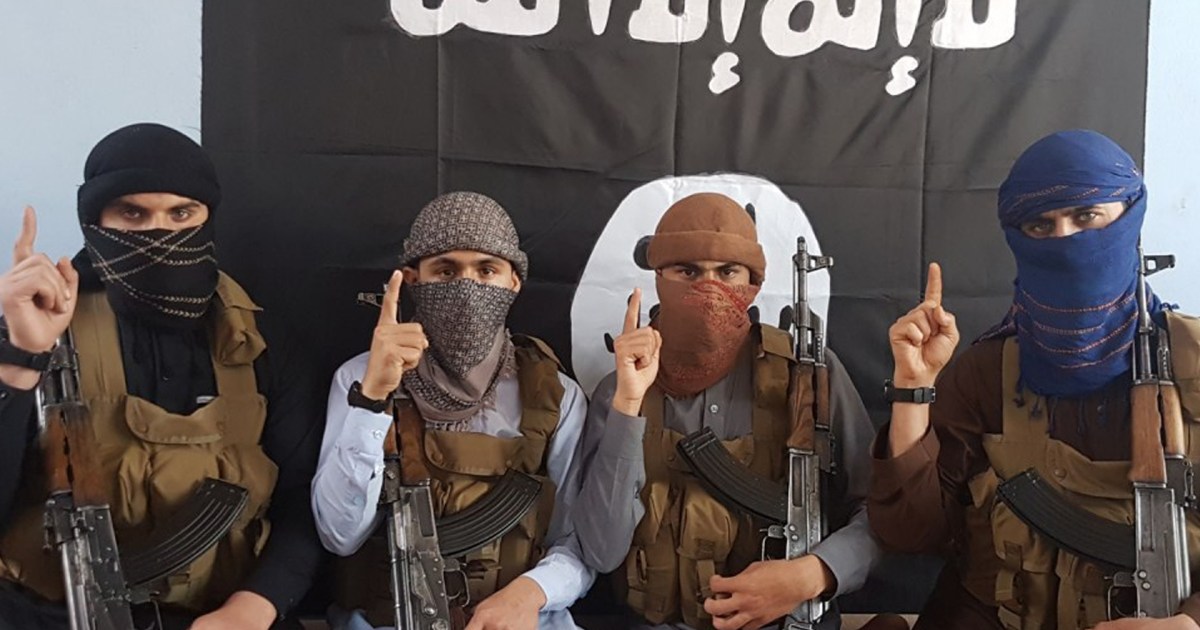The recent attack on Kabul International Airport - which resulted in dozens of dead and wounded - was not the first of its kind carried out by the "Islamic State-Khorasan Province" since its appearance in Afghanistan in early 2015.
Since the organization emerged from the womb of the Taliban movement about 6 years ago, it has been carrying out suicide operations and attacks in Afghanistan that have caused intense rivalry and hostility between it and the Taliban.
Strategic opponent
2015: The "Islamic State-Khorasan Organization" began unifying the territory in the southern provinces of Nangarhar province, which is located on the northeastern border of Afghanistan with Pakistan, and which was the former stronghold of "Al-Qaeda" in the Tora Bora region.
- The new organization in Khorasan received money, advice and training from the main organizational body of the Islamic State, and some experts estimated that these numbers exceed $100 million.
- The presence of the organization was initially limited to a limited number of areas on the border with Pakistan, then it established a second main front in the northern provinces, including Jawzjan and Faryab.
- The Islamic State in Khorasan deals with the Taliban as the main strategic opponent, and classifies the “Taliban” as a group of “dirty nationalists”, who only aspire to form a government confined to the borders of Afghanistan, and this contradicts the goal of the “Islamic State” of establishing a caliphate International.
The organization and the movement exchange accusations;
While the "Khorasan Province Organization" accuses the Taliban of working for the Pakistani intelligence, apostasy, and loyalty to the infidels;
The movement accuses the organization of working for the Jews.
- The "Khorasan Province Organization" tried to recruit Taliban members while targeting the movement's sites throughout the country, and achieved some success, but the Taliban managed to curb the organization's challenges by launching operations against its elements and sites.
Violent clashes
Severe clashes erupted between ISIS and the Taliban in several districts of Nangarhar province, such as Mamand, Achin, Spin Ghar, Kot, Peti Kot, Rodat, Haska Minh and Khokyani. Sherzad, Chaparhar, Pechiroagam, and others, which led to the death of many of the two parties.
- June 2015: Violent clashes erupted between ISIS and the Taliban in the Achin suburb of Nangarhar province on the Pakistani border (eastern Afghanistan) and ended with the expulsion of Taliban fighters from the area.
April 30, 2019: Clashes erupted between Taliban militants and the Islamic State organization in the "Tshabih Dora" district of Kunar province (east of the country);
It led to the displacement of 1,500 civilians from the area.
- During the clashes, according to Al-Jazeera correspondent in Afghanistan, 43 ISIS militants were killed in air strikes carried out by Afghan and foreign forces in the state.
According to the reporter, the Afghan and foreign forces may have provided air cover for the Taliban in its battles with the organization, and that this comes in the context of the political developments related to the peace process, especially the Afghan Loya Jirga's approval of the principle of peace with the Taliban movement.
- The Taliban defeated the organization in the provinces of Nangarhar and Kunar (east of the country), and a large number of the organization's elements fled to the tribal areas in Pakistan, which is a haven for them after their defeat from the Taliban.
The organization seeks, through its sleeper cells in cities, to resume its activity to launch major attacks.
US officials believe that "the organization is exploiting the turmoil that led to the collapse of the Western-backed government this month to expand its base and intensify recruitment among disaffected Taliban" in Afghanistan.
- The Islamic State in Khorasan had a fighting force of 800 fighters as of October 2018, down from a peak of between 3,000 and 4,000 in 2016.
Unlike the Taliban, whose focus remains on Afghanistan, the Islamic State has repeatedly demonstrated its desire to attack the United Nations and Western powers, launching 6 major attacks in the Afghan capital in 2016, then 18 in 2017, and 24 in 2018.
The most prominent attacks of the organization of the province of Khorasan
- July 23, 2016: An ISIS suicide bomber detonated his explosive belt among demonstrators in Kabul, killing at least 80 and wounding about 260 others.
- March 8, 2017: ISIS claimed an attack carried out by an armed man disguised as a doctor on a military hospital in Kabul;
resulting in 50 deaths.
- July 31, 2017: 4 successive explosions rocked the Afghan capital, Kabul, between the localities of "Shahrno" and "Kolula Pashta." The organization claimed responsibility for the attack.
- December 28, 2017: A suicide bomber affiliated with the Islamic State targets a Shiite cultural center in Kabul, killing at least 41.
- April 22, 2018: An ISIS suicide bomber targeted a voter registration center in Kabul;
resulting in 57 deaths.
- April 30, 2018: ISIS claimed a double attack in Kabul, killing at least 25, including several journalists.
- August 15, 2018: A suicide attack took place in a Shiite-dominated area in Kabul, killing 48 - including 34 students - while 67 others were wounded. The Islamic State claimed responsibility for the attack, and admitted that the suicide bomber was known as Abdul Raouf Khorasani.
August 2019: An attack on a wedding party in the capital, Kabul, killed 91 people and wounded dozens.
May 2020: The organization carried out an attack on a maternity hospital in a Shiite-dominated neighborhood in Kabul, killing 25 people.
August 26, 2021: ISIS carried out a suicide bombing at Kabul International Airport, killing 175 people, including at least 28 Taliban militants.

